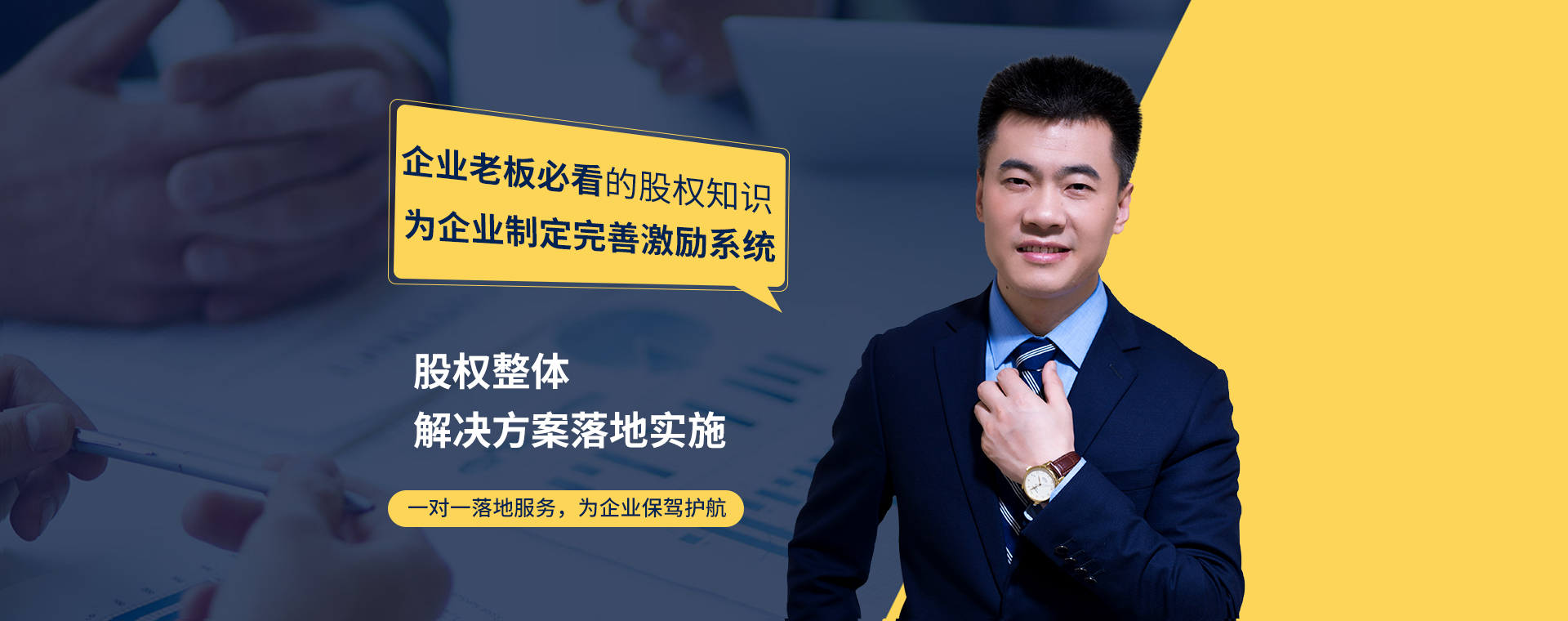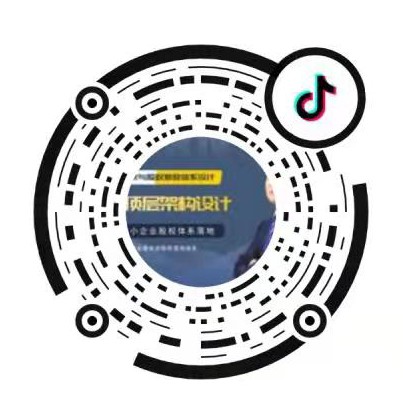
新闻资讯NEWS AND INFORMATION
山东顶层架构设计:股权激励,构建企业与高管命运共同体的核心路径股权激励,构建企业与高管命运共同体的核心路径
发布时间:2025-10-29 来源:http://www.lushangyun.com/
高层管理人员作为企业经营的核心力量,其激励体系始终面临“薪酬过高致保守、过低致谋私”的两难困境。委托代理理论下,股东与高管的利益分歧、短期绩效与长期发展的矛盾,使得传统薪酬(工资、奖金)难以实现“利出一孔”。而股权激励作为连接高管与企业长期价值的关键工具,通过将高管人力资本与企业财务资本绑定,成为破解这一困境、构建事业与命运共同体的核心路径。本文将从底层逻辑、实践趋势、设计原则与规避策略四维度,剖析股权激励的有效落地之道。
As the core force of enterprise operation, the incentive system of senior management personnel always faces the dilemma of "high salary leading to conservatism, and low salary leading to personal gain". Under the agency theory, the divergence of interests between shareholders and executives, as well as the contradiction between short-term performance and long-term development, make it difficult for traditional compensation (wages, bonuses) to achieve a "one size fits all" outcome. As a key tool connecting executives and the long-term value of the enterprise, equity incentives have become the core path to solving this dilemma and building a community of shared future by binding the human capital of executives with the financial capital of the enterprise. This article will analyze the effective implementation of equity incentives from four dimensions: underlying logic, practical trends, design principles, and avoidance strategies.
一、股权激励的底层逻辑:锚定长期价值,平衡两类资本
1、 The underlying logic of equity incentives: anchoring long-term value and balancing two types of capital
股权激励的本质,是对企业“未来价值”的提前分配,其逻辑根基源于对企业价值构成与资本属性的深刻认知,需突破传统薪酬“面向过去绩效”的局限。
The essence of equity incentives is the early allocation of the "future value" of the enterprise, and its logical foundation stems from a profound understanding of the composition of enterprise value and capital attributes. It needs to break through the limitations of traditional compensation that is "oriented towards past performance".
(一)企业价值二分法:股权激励对应“未来价值”创造
(1) Enterprise Value Dichotomy: Equity Incentives Corresponding to "Future Value" Creation
根据黄钰昌教授的观点,企业价值增量包含两部分:一是“当期及过去业绩价值”(当期利润减去期初预期利润),二是“未来业绩价值”(未来预期收益折现总和)。传统现金薪酬(工资、短期奖金)锚定前者,解决高管“当下贡献”的回报问题;而股权激励则锚定后者,解决高管“长期投入”的激励问题——毕竟高管定战略、搭班子的工作成果,需3-5年甚至更久才能显现,唯有绑定未来价值,才能规避“短期逐利消耗战略资源”的风险。以传统制造业与互联网企业对比为例:传统制造业处于稳定期,未来价值预期波动小,股权激励可适度侧重“业绩达标解锁”;而互联网企业依赖模式创新,未来价值想象空间大,股权激励需更强调“市值增长共享”,如腾讯对核心高管的期权激励,直接与用户规模、营收增速等长期指标挂钩。
According to Professor Huang Yuchang's viewpoint, the increment of enterprise value includes two parts: one is the "current and past performance value" (current profit minus initial expected profit), and the other is the "future performance value" (discounted total of future expected income). Traditional cash compensation (wages, short-term bonuses) anchor the former to address the issue of returns for executives' "current contributions"; And equity incentives anchor the latter, solving the incentive problem of executives' long-term investment - after all, the results of executives' strategic planning and team building work take 3-5 years or even longer to manifest, and only by binding future value can the risk of "short-term profit driven consumption of strategic resources" be avoided. Take the comparison between traditional manufacturing industry and Internet enterprises as an example: traditional manufacturing industry is in a stable period, and the expected fluctuation of future value is small, so equity incentive can moderately focus on "performance standard unlocking"; However, Internet enterprises rely on model innovation and have a large space for future value imagination. Equity incentives need to focus more on "market value growth sharing". For example, Tencent's option incentives for core executives are directly linked to long-term indicators such as user size and revenue growth.
(二)资本属性分离:区分财务资本与人力资本的分配权
(2) Separation of Capital Attributes: Distinguishing the Distribution Rights of Financial Capital and Human Capital
中国民营企业常存在“股东兼任高管”的现象,导致高管收入中“股权分红(财务资本收益)”与“薪酬(人力资本收益)”混为一谈——部分老员工凭早期持股“躺平”分红,而新入职的核心高管虽创造高价值却无股权,引发利益博弈。股权激励的关键逻辑之一,便是将两类资本的分配权分离:财务资本收益(股权分红)归属于出资股东,人力资本收益(股权激励)归属于创造长期价值的高管。华为的TUP(时间单位计划)方案堪称典范:在ESOP(员工持股计划)基础上,华为从股东利润中切出部分形成“虚拟分配池”,按高管当期贡献授予TUP份额,5年为一个周期滚动清零——既避免老员工“躺赢”,又让新的奋斗者获得与价值匹配的长期回报,实现“人力资本优先于财务资本”的分配平衡。
Chinese private enterprises often have the phenomenon of "shareholders serving as executives", which leads to the confusion of "equity dividends (financial capital gains)" and "compensation (human capital gains)" in executive income - some old employees "lie flat" and receive dividends based on their early shareholding, while newly hired core executives create high value but have no equity, triggering a game of interests. One of the key logics of equity incentives is to separate the distribution rights of two types of capital: financial capital returns (equity dividends) belong to the contributing shareholders, and human capital returns (equity incentives) belong to the executives who create long-term value. Huawei's TUP (Time Unit Plan) scheme is a model: based on the ESOP (Employee Stock Ownership Plan), Huawei cuts out a portion of shareholder profits to form a "virtual distribution pool", and grants TUP shares to executives based on their current contributions, with a rolling zeroing cycle of 5 years. This not only avoids old employees from "lying down and winning", but also allows new fighters to receive long-term returns that match their value, achieving a distribution balance of "human capital priority over financial capital".
二、股权激励的实践趋势:从“单一激励”到“生态绑定”
2、 The Practice Trend of Equity Incentives: From "Single Incentives" to "Ecological Binding"
近年来,企业对股权激励的运用已突破“单一实股/期权”的模式,呈现“合伙人化、生态化、监管规范化”三大趋势,进一步强化“长期绑定”效应。
In recent years, the use of equity incentives by enterprises has broken through the "single stock/option" model, presenting three major trends of "partnership, ecology, and regulatory standardization", further strengthening the "long-term binding" effect.
(一)合伙人体系:从“高管激励”延伸至“多层级绑定”
(1) Partner system: extending from "executive incentives" to "multi-level binding"
企业不再将股权激励局限于核心高管,而是构建“多层级合伙人体系”,实现从高层到中基层核心人才的全覆盖。万科2014年推出的“事业合伙人”方案极具代表性:上层为200余名EP奖金获得者的“集团持股计划”,绑定长期战略;中层为2500余名骨干的“项目跟投”,绑定项目收益;底层为“事件合伙”,临时组队解决跨部门问题——通过三层股权激励,将“企业目标”转化为“全员目标”,破解“部门扯皮、短期甩锅”难题。
Enterprises no longer limit equity incentives to core executives, but instead build a "multi-level partner system" to achieve full coverage of core talents from top to middle and grassroots levels. The "Business Partner" program launched by Vanke in 2014 is highly representative: the upper level is a "Group Shareholding Plan" consisting of over 200 EP bonus recipients, tied to long-term strategies; Mid level "project follow-up investment" with over 2500 key personnel, tied to project revenue; The bottom layer is the "event partnership", which temporarily teams up to solve cross departmental problems - through three-tier equity incentives, the "enterprise goals" are transformed into "all staff goals", solving the problem of "departmental bickering and short-term blame shifting".
(二)生态化延伸:从“内部高管”拓展至“外部伙伴”
(2) Ecological Extension: Expanding from "Internal Executives" to "External Partners"
部分企业将股权激励的边界突破企业内部,延伸至产业链生态伙伴,形成“共生共荣”的利益网络。温氏股份的“公司+农户”模式便是创新案例:温氏将农户纳入“生态合伙人”,农户缴纳预付金参与生猪养殖,温氏提供技术、饲料支持,待商品猪出栏后,除支付托管费外,还通过“虚拟股权”让农户分享企业长期利润——既解决了养殖端的效率问题,又将外部伙伴转化为“长期利益共同体”,避免了传统“雇佣关系”下的农户偷工减料风险。
Some companies have broken through the boundaries of equity incentives within the company and extended them to industry chain ecological partners, forming a "symbiotic and prosperous" interest network. The "company+farmer" model of Wenshi Group is an innovative case: Wenshi includes farmers as "ecological partners", and farmers pay advance payments to participate in pig farming. Wenshi provides technical and feed support. After the commercial pigs are slaughtered, in addition to paying custody fees, Wenshi also allows farmers to share the long-term profits of the enterprise through "virtual stock rights". This not only solves the efficiency problem of the breeding end, but also transforms external partners into a "long-term community of interests", avoiding the risk of farmers cutting corners and materials under the traditional "employment relationship".
(三)监管规范化:从“自主设计”走向“业绩挂钩”
(3) Regulatory standardization: moving from "self-designed" to "performance linked"
随着监管机构对高管薪酬的关注度提升,股权激励不再是企业“自主让利”的工具,而是需与业绩硬指标绑定。美国的“Say on Pay”制度要求上市公司高管薪酬(含股权激励)提交股东大会投票,若出现“薪酬与业绩不匹配”,将面临否决;中国香港联交所明确要求限制性股票解锁需与绩效考核挂钩,A股上市公司则需披露股权激励的“业绩考核指标”(如营收增长率、EVA等)。2023年国务院国资委要求央企控股上市公司规范ESG信息披露,未来ESG指标(如碳排放、社会责任)纳入股权激励考核,将成为新趋势。
With the increasing attention of regulatory agencies to executive compensation, equity incentives are no longer a tool for companies to "voluntarily give profits", but need to be tied to hard performance indicators. The "Say on Pay" system in the United States requires that executive compensation (including equity incentives) of listed companies be submitted to the shareholders' meeting for voting. If there is a "mismatch between compensation and performance", it will face rejection; The Hong Kong Stock Exchange of China explicitly requires the unlocking of restricted stocks to be linked to performance evaluation, while A-share listed companies are required to disclose the "performance evaluation indicators" of equity incentives (such as revenue growth rate, EVA, etc.). In 2023, the State owned Assets Supervision and Administration Commission of the State Council requires listed companies controlled by central enterprises to standardize ESG information disclosure. In the future, incorporating ESG indicators such as carbon emissions and social responsibility into equity incentive assessments will become a new trend.
三、股权激励设计的关键原则:避免“福利化”,坚守“价值导向”
3、 The key principle of equity incentive design: avoid "welfare oriented" and adhere to "value orientation"
并非所有股权激励都能实现“绑定效应”——部分企业将股权激励视为“高管福利”,未与价值创造挂钩,最终导致“激励无效、股东受损”。有效的股权激励设计需坚守四大原则,呼应“共享、共担、共创、动态”的核心逻辑。
Not all equity incentives can achieve a "binding effect" - some companies view equity incentives as "executive benefits" and do not link them to value creation, ultimately leading to "ineffective incentives and shareholder losses". Effective equity incentive design needs to adhere to four principles and echo the core logic of "sharing, joint responsibility, co creation, and dynamic".
(一)共享收益:短期与长期收益并重
(1) Shared benefits: equal emphasis on short-term and long-term benefits
股权激励的“共享”不仅是“共享未来市值增长”,还需与短期超额利润联动,避免高管“只看长期忽视当下”。例如,某科技企业设计“年终奖+限制性股票”组合:当年业绩超额完成时,30%奖金以现金发放(短期共享),70%转化为限制性股票(长期共享),解锁条件与未来3年营收增速挂钩——既保证高管当下有获得感,又绑定长期目标。
The 'sharing' of equity incentives is not only about 'sharing future market value growth', but also needs to be linked with short-term excess profits to avoid executives' 'long-term neglect of the present'. For example, a technology company designed a combination of "year-end bonus+restricted stock": when the performance exceeds the target for the year, 30% of the bonus will be distributed in cash (short-term sharing), and 70% will be converted into restricted stock (long-term sharing). The unlocking conditions are linked to the revenue growth rate in the next three years - ensuring that the senior management has a sense of achievement at present and binding long-term goals.
(二)共担风险:设置“风险对冲”机制
(2) Shared risk: Establishing a "risk hedging" mechanism
高管若仅享受收益不承担风险,易导致“激进决策”(如盲目扩张求市值)。有效的股权激励需嵌入“风险共担”条款:一是“递延解锁”,如某国企规定高管股权激励分3年解锁,若解锁期内企业出现重大经营风险(如亏损、违规),未解锁部分作废;二是“跟投机制”,如地产企业要求项目高管按比例跟投项目,若项目亏损,高管需承担跟投资金损失——通过“收益延后、风险前置”,倒逼高管审慎决策。
If executives only enjoy profits without taking risks, it can easily lead to "radical decisions" (such as blindly expanding market value). Effective equity incentives need to be embedded with "risk sharing" clauses: firstly, "deferred unlocking". For example, a state-owned enterprise stipulates that executive equity incentives are unlocked over three years. If there are significant operational risks (such as losses or violations) during the unlocking period, the unlocked portion will be invalidated; The second is the "follow-up investment mechanism", such as real estate companies requiring project executives to follow investment projects proportionally. If the project incurs losses, the executives need to bear the losses of the follow-up investment funds - through "deferred returns and pre risk", forcing executives to make prudent decisions.
(三)共创价值:锚定“战略关键任务”
(3) Co creating Value: Anchoring Strategic Key Tasks
股权激励的授予对象与解锁条件,需紧密围绕企业战略,避免“平均主义”。例如,某传统制造企业推进“数字化转型”,其股权激励仅授予“数字化转型项目组”高管,解锁条件设定为“数字化设备使用率≥80%、生产效率提升≥20%”——既聚焦战略重点,又向“创造转型价值”的高管倾斜,避免股权激励沦为“全员福利”。
The granting objects and unlocking conditions of equity incentives should closely revolve around corporate strategy and avoid "egalitarianism". For example, a traditional manufacturing enterprise is promoting "digital transformation", and its equity incentives are only granted to executives of the "digital transformation project team", with unlocking conditions set as "digital equipment utilization rate ≥ 80%, production efficiency improvement ≥ 20%" - focusing on strategic priorities and tilting towards executives who "create transformation value" to avoid equity incentives becoming "employee benefits".
(四)动态调整:匹配企业发展阶段
(4) Dynamic adjustment: matching the development stage of the enterprise
企业在不同生命周期,对股权激励的需求不同:创业期业务不确定性高,需用“高比例期权”吸引高管(如授予10%-15%股权);成长期需绑定核心团队,可用“限制性股票”(解锁条件与营收增长挂钩);成熟期需避免“躺平”,可用“滚动式股权激励”(如华为TUP每5年清零重授)。若企业盲目对标“行业标杆”,在创业期用成熟期的“低比例股权”,则难以吸引核心人才。
Enterprises have different needs for equity incentives in different life cycles: the business uncertainty during the start-up period is high, and "high proportion options" are needed to attract executives (such as granting 10% -15% equity); During the growth period, it is necessary to bind the core team and use "restricted stocks" (unlocking conditions linked to revenue growth); In the mature stage, it is necessary to avoid "lying flat" and use "rolling equity incentives" (such as Huawei TUP reset every 5 years). If enterprises blindly benchmark against "industry benchmarks" and use mature "low proportion equity" during the start-up period, it will be difficult to attract core talents.
四、股权激励的常见误区与规避策略
4、 Common Misconceptions and Avoidance Strategies of Equity Incentives
实践中,企业常因对股权激励逻辑理解偏差,陷入三大误区,需针对性规避:
In practice, enterprises often fall into three major misconceptions due to a misunderstanding of the logic of equity incentives, which need to be avoided in a targeted manner:
(一)误区一:将股权激励视为“留人的工具”,而非“价值分配工具”
(1) Misconception 1: Treating equity incentives as a 'retention tool' rather than a 'value distribution tool'
部分企业为“留住高管”,盲目授予股权,却未设定业绩条件——结果高管拿着股权不创造价值,反而成为“阻碍变革的既得利益者”。规避策略:明确“股权激励是对过去价值的认可、对未来价值的承诺”,授予前需通过“人才盘点”评估高管的“能力与绩效”,授予后需用“动态评价”(如年度战略解码、业绩复盘)判断是否继续授予。
Some companies blindly grant equity without setting performance conditions in order to "retain executives" - as a result, executives holding equity do not create value, but instead become "vested interests that hinder change". Avoidance strategy: It is clear that "equity incentives are recognition of past value and commitment to future value". Before granting, the "ability and performance" of executives need to be evaluated through "talent inventory", and after granting, "dynamic evaluation" (such as annual strategic decoding and performance review) needs to be used to determine whether to continue granting.
(二)误区二:股权分配“一刀切”,忽视内部分配差异
(2) Misconception 2: One size fits all equity distribution, ignoring internal distribution differences
部分企业对高管团队“平均授予股权”,未考虑董事长、总经理与副总经理的责任差异——导致“责任大的人收益无差异”,挫伤核心高管积极性。规避策略:参考行业规律,合理设定高管内部分配比例(如总经理与副总经理的股权比例为1:0.7-0.8),同时结合“岗位价值评估”(如承担战略决策的岗位股权比例更高),实现“责任与收益匹配”。
Some companies grant equity to their executive teams on an average basis, without considering the differences in responsibilities among the chairman, general manager, and vice general manager, resulting in "no difference in benefits for those with greater responsibilities" and dampening the enthusiasm of core executives. Avoidance strategy: Referring to industry rules, set a reasonable internal distribution ratio for executives (such as a 1:0.7-0.8 equity ratio between the general manager and deputy general manager), and combine it with "job value evaluation" (such as a higher equity ratio for positions responsible for strategic decision-making) to achieve "matching of responsibility and benefits".
(三)误区三:缺乏“退出机制”,导致“股权僵化”
(3) Misconception 3: Lack of "exit mechanism" leads to "equity rigidity"
部分企业未设定高管离职后的股权处理规则,高管离职后仍持有股权分红,引发在职高管不满。规避策略:提前约定“退出条款”,如高管主动离职,未解锁股权作废,已解锁股权由企业按“净资产价格”回购;若高管因违规离职,企业无偿收回全部股权——通过清晰的退出规则,避免“股权沉淀”。
Some companies have not established rules for handling equity after the departure of executives, and executives still hold equity dividends after leaving, which has caused dissatisfaction among current executives. Avoidance strategy: Pre agree on the "exit clause", such as if the executive resigns voluntarily, the unlocked equity will be invalidated, and the unlocked equity will be repurchased by the enterprise at the "net asset price"; If a senior executive resigns in violation of regulations, the company will reclaim all equity without compensation - through clear exit rules to avoid "equity accumulation".
结语
Conclusion
股权激励不是“万能药”,但其核心价值在于:通过绑定高管与企业的长期价值,将“委托代理关系”转化为“命运共同体关系”。企业在设计股权激励时,需回归“价值创造-价值评价-价值分配”的底层逻辑,避免“工具化”“福利化”倾向,让股权激励真正成为“高管奋斗的动力、企业成长的支撑”。唯有如此,才能破解高管激励的“老大难”问题,实现企业与高管的长期共赢。
Equity incentives are not a panacea, but their core value lies in transforming the "principal-agent relationship" into a "community of shared destiny" by binding the long-term value of executives and enterprises. When designing equity incentives, enterprises need to return to the underlying logic of "value creation value evaluation value distribution", avoid the tendency of "instrumentalization" and "welfare", and make equity incentives truly become the "driving force for executives' struggle and the support for enterprise growth". Only in this way can we solve the long-standing problem of executive incentives and achieve a long-term win-win situation between the company and executives.
本文由 山东顶层架构设计 友情奉献.更多有关的知识请点击 http://www.lushangyun.com/ 真诚的态度.为您提供为全面的服务.更多有关的知识我们将会陆续向大家奉献.敬请期待.
This article is a friendly contribution from Shandong Top Architecture Design For more related knowledge, please click http://www.lushangyun.com/ Sincere attitude To provide you with comprehensive services We will gradually contribute more relevant knowledge to everyone Coming soon.
本站声明
本网站为非营利性网站,旨在宣扬股权知识,交流职业学习心得。网站内部分文章来自其它网站,只做交流学习之用。相应的权力均属于原权 力人,如权利人认为不妥,请来电来函说明,本网站随既停止或使用,谢谢合作! 13698613138
13698613138
微信公众号

扫码获知更多知识

抖音二维码

截屏,微信识别二维码